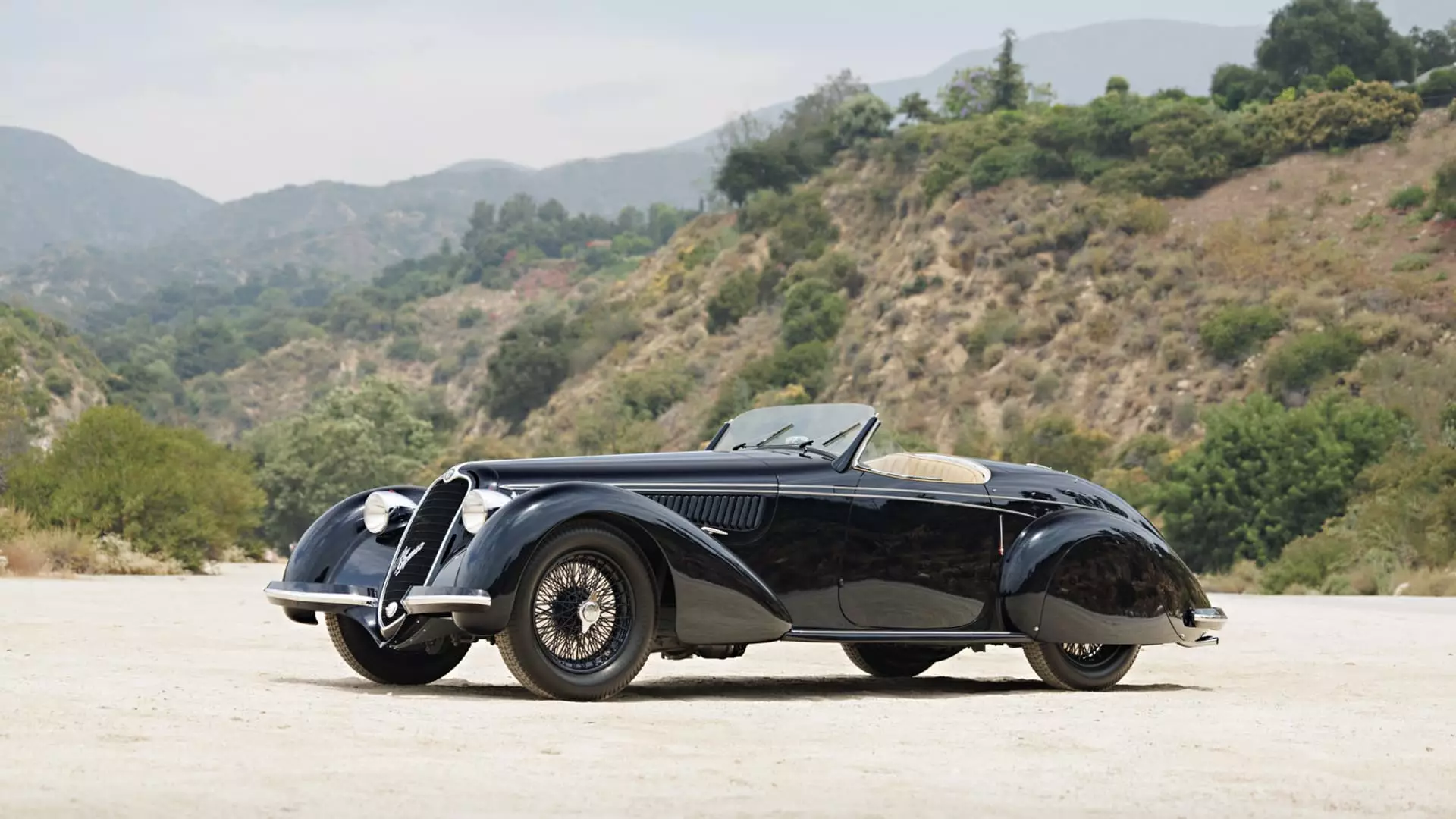In recent years, the classic car market has been experiencing significant changes in terms of sales trends and buyer preferences. A recent report from Hagerty, the classic-car insurance company, revealed that auction sales during Monterey Car Week fell by 3% compared to the previous year. This decline comes as a result of a shift from older classic cars to newer models, leading to a pileup of unsold classics from the 1950s and 1960s. While some experts attribute this shift to changing demographics and market dynamics, others point to factors such as high-interest rates and oversaturation in the market.
The total sales at this year’s five car auctioneers in Monterey, including RM Sotheby’s, Broad Arrow, Gooding & Company, Mecum, and Bonhams, amounted to $391.6 million, down from $403 million in the previous year. This decline in sales follows a similar drop of 14% from the peak of 2022. Out of the 1,143 cars put up for sale, only 821 were sold, resulting in a 72% sell-through rate. The average sale price also saw a slight decrease to $476,965 from last year’s average of $477,866.
One of the key factors driving the shift in the classic car market is the emergence of a new generation of collectors, mainly Gen Xers and millennials, who prefer cars from the 1980s, 1990s, and 2000s. This shift in preferences has led to a surplus of classic cars from the 1950s and 1960s, which were once popular among baby boomers, now struggling to find buyers. The sell-through rate for pre-1981 cars priced at $1 million or more was a mere 52%, while cars less than 4 years old had a much stronger sell-through rate of 73%. This trend indicates that younger collectors are now driving the market and influencing buying decisions.
The changing dynamics in the classic car market have also had a significant impact on prices. Hagerty’s Supercar Index, which tracks sports cars from the 1980s through the 2000s, has seen a substantial increase of over 60% since 2019. In contrast, the Blue Chip Index, which focuses on classic cars from the 1950s and 1960s, has experienced a decline of 3%. While rare and highly coveted masterpieces can still fetch high prices, the overall trend points towards a decline in prices for older classic cars, especially as older collectors start selling off or downsizing their collections.
Some experts attribute the changing trends in the classic car market to factors such as oversaturation, changing demographics, and high-interest rates. The oversupply of similar classic cars at auctions has made it challenging to generate strong prices and sales. Additionally, the rise in interest rates has raised the opportunity cost of buying a classic car for many buyers, leading them to reconsider their investment decisions. However, despite these challenges, there are also opportunities for growth in the market, particularly in the modern supercar class, which is gaining popularity among collectors.
The classic car market is undergoing a period of transition driven by changing buyer preferences, market dynamics, and economic factors. While older classic cars from the 1950s and 1960s are facing challenges in finding buyers, newer models from the 1980s, 1990s, and 2000s are gaining traction among younger collectors. The shift in market trends poses both challenges and opportunities for stakeholders in the classic car industry, requiring them to adapt to the changing landscape and evolving consumer preferences.

Leave a Reply